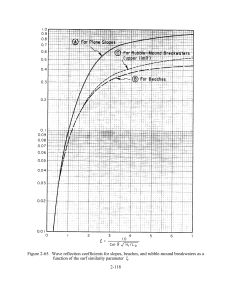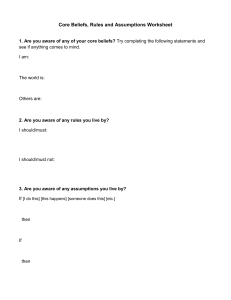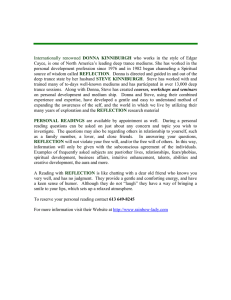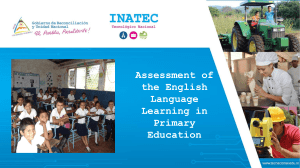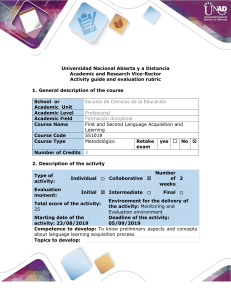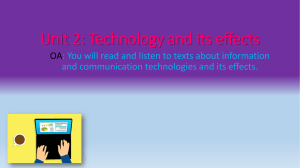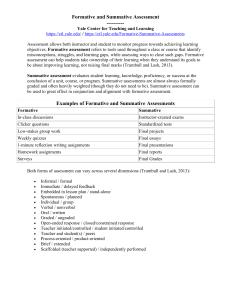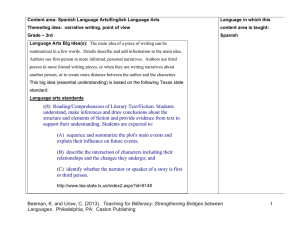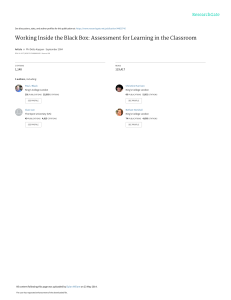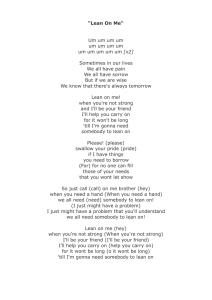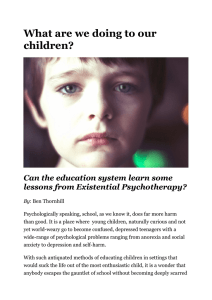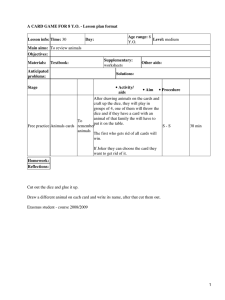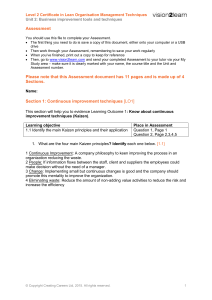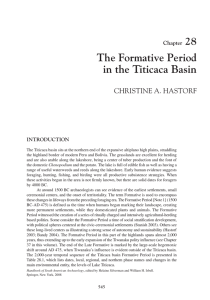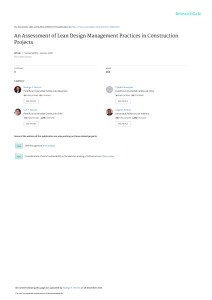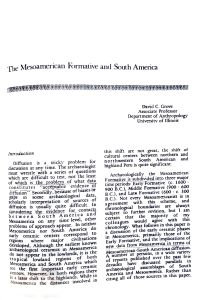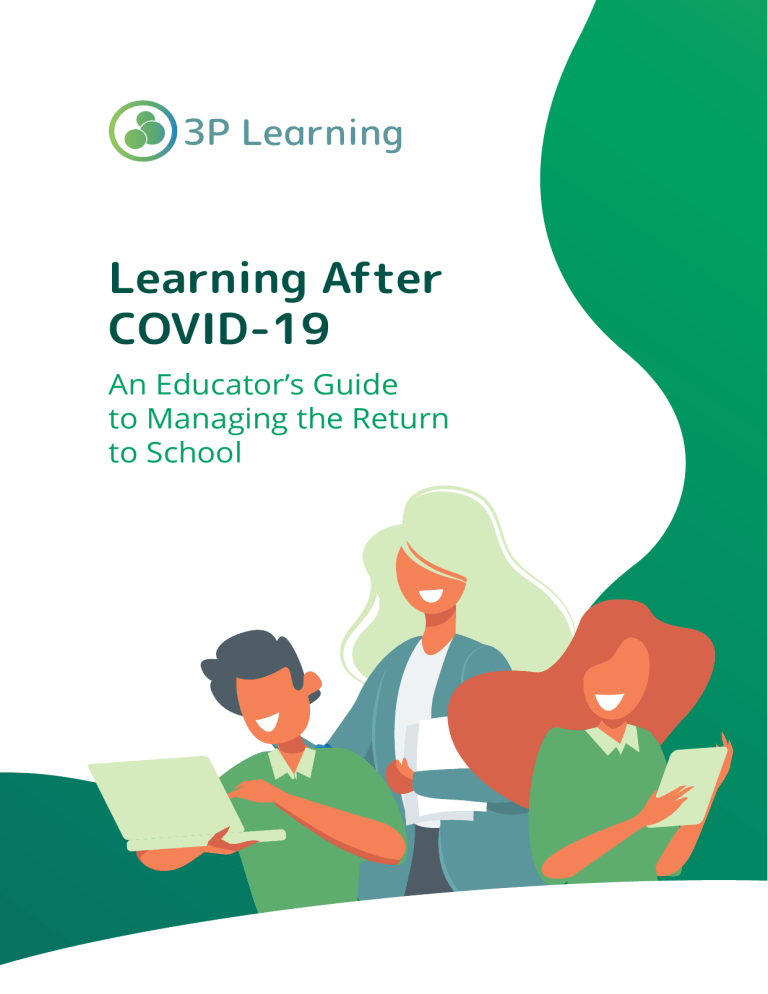
Learning After COVID-19 An Educator’s Guide to Managing the Return to School Contents Introduction 02 Promoting Social and Emotional Wellbeing 03 Creating a welcoming physical space 04 Reconnecting socially and emotionally 04 Talking about the crisis 05 Providing emotional support 05 Reflecting on Home Learning 06 Scaffolding reflection 07 Using student reflections to plan 08 Setting SMART goals for the learning ahead 08 Playing Curriculum Catch-Up 09 Using formative assessment to determine required learning 10 Planning and assigning priority 11 Using lean teaching practices for maximum efficiency 11 Learning from the Experience 13 Instructional strategies 14 Technology usage 14 Student relationships 14 Parent relationships 14 Introduction: While schools across the world have differed in their responses to COVID-19, the effort to return students to the classroom as soon as possible has been universal. For teachers and students who have been deprived of structured learning environments for months, the transition couldn’t come soon enough. But there are challenges implicit in the back-toschool process too. There’s no denying that student learning will have been impacted, and the global panic surrounding COVID-19 will have generated anxiety and trauma in many cases. This eBook will guide you through the steps you can take to transition your students back into school life, attending to both academic progress and socialemotional wellbeing. We’ll also delve into strategies for rethinking your practice in the post-COVID-19 world, so that you emerge more equipped than ever to meet the needs of your students. 2 Promoting Social & Emotional Wellbeing Our students’ social and emotional wellbeing is first priority. Many will have struggled with social isolation and altered family circumstances in recent months. Others may feel they have fallen behind academically and that their recovery will be difficult. The good news is that returning to school promises a welcome sense of routine, social connectivity and support for our students. To re-tune our students to this safe environment, we can take the four steps listed below. Create a welcoming physical space Reconnect socially and emotionally Talking about the crisis Providing emotional support 3 Creating a welcoming physical space Take the time to make your classroom feel like home for returning students. Tidy up any clutter that accumulated during the last frantic days of in-school learning and open the windows for fresh air after the long period of inactivity. Take the opportunity to make some positive additions to the learning space. Consider the following: • Put up posters or art prints to liven up blank walls. • Bring in some plants. These have proven positive effects in both adult and child workspaces, and your students can take responsibility for their maintenance. • Decorate the walls with student work. This promotes student ownership of the space. • Use a classroom decoration kit to make the space even more vibrant and dynamic. Strategically reordering the classroom layout can also make for a more inclusive and inviting environment. You might like to: • Create desk groups, so that students can face each other and collaborate. This will be much welcomed after so much time apart. • Create ‘chill-out’ zones for quiet reading or independent work, with beanbags and cushions. • Start a class community bookshelf where students can take and share books as they please. Reconnecting socially and emotionally The emotional dimensions of the classroom are just as important as the physical. Reconnecting with peers and debriefing after such a challenging time will help put students at ease and quell lingering anxieties. Give students time to simply talk to each other and reconnect before you jump back into learning. Depending on your students’ ages, this might be time for completely informal chat, or you might go around the room and have each student share such things as: • Something that excites them about the return to school • A friend they are happy to see • A story or experience from their time away. 4 As a teacher, you can also share these things yourself. Remember that your students haven’t seen you for quite some time, so some self-disclosure will help to rekindle trust and familiarity. You could even share photos of pets or home projects that kept you busy during the shutdown. Talking about the crisis Discussion of COVID-19 is inevitable if our students are to reconnect and share their experiences. They will also have questions about it that they expect their teacher to answer. Discuss the situation in an age-appropriate way without inciting fear or panic. Let your students lead the discussion with their own questions. This ensures that they get the information they want, without the lecturing that can trigger feelings of powerlessness. Watch for physical cues and lighten the mood if your students show signs of distress. Providing emotional support Your students might have absorbed the anxiety surrounding learning loss that has been echoed by the media in recent months. Make it clear to students that they are not alone in these anxieties, but also acknowledge the positive, ongoing learning that has taken place during the shutdown. For example, you could ask students to share (a) one new thing they have learned away from school, and (b) one thing that worries them about the return to school. This highlights to students that learning is ongoing and that they are not alone in their worries. For some students, the COVID crisis will have left deeper hurt. Monitor any students who: • Something that excites them about the return to school • Isolate themselves from peers • Display extreme or regressive actions (e.g. crying, noisy attention-seeking, refusal to cooperate) • Seem apathetic or lethargic in a way that is out of character • Avoid emotionally engaging with others (e.g. lack of eye contact, non-responsive). Depending on the severity of their actions, you can delicately broach the issue to get a sense of what is wrong. If this is not possible, refer them to your school’s psychologist or student support team. 5 Reflecting on Home Learning Having students reflect on their home learning achieves three things: 1. It highlights and celebrates the learning that did occur at home, and therefore recommences classroom learning on a positive note. 2. It encourages students to take something away from the experience. This might be an insight into how they learn best, or what support they require to achieve more highly. 3. It informs SMART goals for the next phase of learning. Use the following three steps for meaningful reflection. ? ! 6 Scaffolding reflection Depending on the age of your students, you might approach reflection in the following ways: • Younger students could answer a series of questions that prompt simple emotive ☹). responses with faces (e.g. • Older students could complete a simple survey (Google Forms is useful for this). This is also useful as it collates data that shows students they are not alone in their thinking. • High school students can complete a more in-depth written reflection, using prompt questions. Model the reflection process for students so that they understand the associated thinking process. You might even share your answers to the same questions, as they will apply to you too. Student Reflection Prompts • What successes did you experience during the home learning period? This might be a new concept or skill learned, or a habit that kept you healthy and happy • What was challenging during the home learning period? • What strategies did you use to cope with these challenges? • What aspect of home learning did you enjoy the most? • What helped you do your best work during home learning? • Which areas do you need more help with now that we’re back at school? Reflection Prompts for Older Students • What has this experience taught you about the way you learn? • What new habits are you bringing back to school in order to learn more effectively? • Are there any aspects of home learning that you would like to see transferred into the classroom (e.g. flexibility, more independence)? Adapt the wording to suit your students’ reflective capabilities. 7 Using student reflections to plan Read your students’ reflections to gain a better understanding of individual needs. It’s also a clever idea to look for patterns and use these for your planning. For example, if multiple students say they need help with a specific content area, factor some direct instruction into the first few weeks. Similarly, if students say they enjoyed certain aspects of home learning, you might try to incorporate these into your classroom practice (see Chapter 4: Learning From the Experience). Setting SMART goals for the learning ahead Make sure you return reflections to students so they can use them to generate meaningful goals for the next phase of their learning. This will provide a welcome sense of structure and purpose following the disorientation of recent months. Use the SMART framework for goal setting, which stands for • Specific: the goal is clearly defined • Measurable: students can quantify or measure the outcome to determine if success has been achieved • Attainable: the goal is realistic • Relevant: the goal contributes to overall student learning and progress • Timely: there is a set time period in which the goal is to be achieved. Most students will start with an open-ended goal (e.g. “I want to be better in mathematics”). Use this as a starting point and model how to add the nuance and context that makes it SMART. For example, the above goal might be adapted as follows: “ This term I am going to develop a better understanding of fractions so that I perform better in mathematics assessments. I will do this by completing all the Mathletics lessons on fractions over the next four weeks and asking my teacher for help whenever I need it.” The attainable aspect of the goal is vital at a time when students might feel unrealistic obligations to ‘catch up’ overnight. Encourage your students to set goals that are realistic for them above all else. As you ease back into learning, encourage students to regularly revisit their goals and track their progress. Their goals will provide an intrinsic source of motivation for the weeks ahead. 8 Playing Curriculum Catch-Up Returning to learning means returning to normal, and that’s why it should happen as soon as possible. However, there’s no denying that students will need some catching up after their time away from school. Take the following steps to get them up to speed. Use formative assessment to determine required learning Plan and assign priority Use lean teaching practices for maximum efficiency 9 Using formative assessment to determine required learning Couple students’ reflections with formative assessment to get a sense of what learning has been achieved during the home learning period. Formative Assessment Strategies Quizzes Online quizzes can provide an engaging means of low-stakes assessment. Reward high scorers for maximum engagement. EdTech programs EdTech programs offer another form of low-stakes, engaging activities that provide you with automatic feedback on student learning. For example, you could set an activity for the whole class on Mathseeds or Mathletics and then use the data to split students into differentiated groups. Observation Observing students at work remains one of the most reliable ways to gauge progress. Walk around the room and take notes on students’ engagement, efficiency and autonomy when working on a task. Self-assessment rubrics Students can use a rubric to self-assess the extent of their learning. Break down the learning into individual criteria and then have students identify their level of confidence on a range from ‘Very confident’ to ‘I need some help with this concept’. One-on-one interviews These can be time-consuming, but they will provide you with a deep insight into what learning has occurred at home. Keep the tone light and use open-ended questions that give students choice and agency (e.g. instead of asking “what don’t you understand?”, try “which areas do you want me to help you with?”). Whichever formative assessment method(s) you choose, make sure you take note of gaps in the learning. These will inform your future planning. It’s also a good opportunity to celebrate the learning that has occurred, as this builds student confidence and kickstarts the learning on a positive note. Congratulate the class for their results and efforts. 10 Planning and assigning priority You now need to adapt any existing plans to account for the gaps and lapses in your students’ learning. Depending on the extent of these gaps, you may need to make some areas a priority over others. Discuss curriculum priorities with your colleagues. This will make for a unified approach across the department and it also allows you to talk to the teachers who will be responsible for your students next year. They can inform you of which skills are essential prerequisites and which can be feasibly recovered via a ‘crash course’ at the start of the next academic year. Plan in reverse to tackle these priorities. Start from the end learning goal (often this takes the form of a summative assessment) and then create a flexible plan for each unit of class time that gets you there. Remember to account for more time than you think you will need. Replace some of the time that would be spent on introducing new content and teacher-led instruction with self-paced practice opportunities, catch-up classes, and Q&A sessions. Using lean teaching practices for maximum efficiency Make the most of the remaining time in the school year by adopting a lean teaching approach for maximum learning efficiency. This means cutting down on busywork and unnecessary tasks that do not contribute to the core goal of student learning. Consider the following examples: Inefficient Efficient Produce handwritten feedback for every student on a weekly formative assessment task and trust students to compile it. Have students write a weekly reflection on their learning in a designated learning journal. They think about their learning more deeply, compile evidence of learning in one easily accessible spot and you can use it as a source of formative assessment. 11 Prepare a teacher-led instructional component for every lesson with new PowerPoints, introductory sets and resources. Designate certain classes as practice sessions where students can seek help and work at their own pace with self-guided resources. They benefit from more time to consolidate content and you don’t spend as much time planning. Grapple with complex software to generate documents when you already know what you want them to look like. Produce the document freehand with original graphic elements. You save time and students will be engaged by a resource that shows true teacher creativity and imagination (regardless of your artistic skills). Upload working files for your students online, then replace them with an updated version each time they are edited. Use cloud-based documents (e.g. Word Online, Google Docs) that update automatically, so students can always access the latest version via a single link. Lean practices save time, which can be reinvested into the more pressing tasks at hand – filling in the learning gaps, getting students’ learning back on track and individually supporting students who are at risk of falling behind. 12 Learning from the Experience While we’ll be glad to leave behind the more chaotic changes that came with the transition to distance teaching, there are others that we can embrace in order to adapt and become better teachers. Take the time to reflect on what worked, what failed and what knowledge you can take back to the classroom. 13 Reflection Questions Instructional strategies • • • Did any of your students benefit from the increased autonomy and independence that came with home learning? Perhaps this opportunity could be extended to them more often in class. Did the online environment make any activities (e.g. group work, collaboration, differentiated instruction) any easier to manage? If so, this could be incorporated into your classroom instruction. How did your students respond to more diverse modes of instruction (e.g. video, text, sound, multimedia)? Did you notice any increase or decrease in engagement? Student relationships • What strategies were most effective in keeping you connected to students while you were apart? • How might you apply these for stronger relationships in the classroom? • How did the online environment change the way your students communicated with each other? Perhaps it allowed quiet students to find their voice, or prompted more considered and thoughtful communication? Technology usage • What EdTech tools worked and why? • How could you integrate these with regular classroom instruction? For example, you might use them to set homework and formative assessments and track student results. • Have you discovered any capabilities of your LMS that you weren’t aware of previously? How could you get the most out of these? • What have you learned about your students’ technological capabilities? Are they as ‘digitally native’ as you thought, or are there soft skills they need to develop? Parent relationships • How did parents respond to having a more active role in their child’s learning? • Could their involvement be harnessed in the future to better support classroom learning? • What communication strategies were effective for keeping parents informed during this time? How might you use these in the future? 14 Home of award-winning education platforms www.3plearning.com
